Do you want your hustle to finally pay off? You need insider tips. In this guide, we’ll teach you how to promote your clothing brand so you would be getting sale after sale!
To win in the fashion industry, you need to get serious with marketing your clothing brand. If you want to dropship clothes, working on your digital marketing is a must.
We at sixads have worked with more than 100,000 Shopify store owners, so we know what kind of marketing brings the best results for entrepreneurs in e-commerce. Now, we share our knowledge with you.
Ready to wave goodbye to the 9-5? Dig in!
1. Define your target audience

Selling to everyone is selling to no one.
Before you start to dropship clothes, you need to define your target market for your clothing company. You need to know who you’re selling to so you could do it well!
Just because you’re selling skirts, it doesn’t mean that every woman can be your customer. They all have different tastes in fashion. You need to narrow down your audience so you’d spend your ad dollars efficiently.
Here are the main questions to ask when thinking about your target audience:
- What are they interested in?
- What do they do for work?
- What’s their age, gender, location?
- What fashion brands do they like?
- Where do they hang out online?
Once you know your target audience, you can create content with a clear direction!
After all, you’d likely use different copy and visuals when promoting a classic high-waist skirt versus a neon tutu.
Also, keep in mind that your target audience may change a little as your store grows. You may notice that some audiences perform better than others and put more attention towards marketing to them.
If you’ve already got your online store running, you can use Google Analytics to learn more about your visitors. In the “Audience” tab, you can find demographics, interests, see which devices your visitors are using, and find more useful insights.
2. Reach shoppers with targeted ads

The next step is to find the best ways to reach your audience. Whether you’re just starting your dropshipping business or you already have a flow of customers, advertising is one of the most efficient ways to scale your store. Why?
You can start selling instantly!
Long-term organic content strategies work and eventually can help you leave many of your competitors behind. However, creating quality content takes time, sometimes even years, before you can see results in your bank account. With well-targeted ads, you can start selling immediately.
Where should I run ads?
We collected data from more than 60,000 Shopify stores to see where visitors and money come from. For Apparel and Accessories stores, the top 5 best selling channels are Facebook, Instagram, and Google!

Below you can see the exact numbers (% of total traffic vs % of total revenue) grouped in descending order.
- Direct = 25.47% vs 35.27%
- Organic (Google + Yahoo + Bing + others) = 24.00% vs 27.99%
- Facebook Ads = 24.72% vs 17.16%
- Google Ads = 9.63% vs 10.77%
- Instagram Ads = 7.38% vs 6.50%
Paid advertising accounts for a big chunk of sales! And here’s another great thing: with ads, you can increase your direct sales (the #1 channel on the chart), too! How?
Advertising helps you to increase your brand awareness. You can run direct sales ads or advertise your blog to warm up your target market.
People will start to associate your brand with the clothes they like after seeing your store’s multiple ads.
They may not buy from you instantly, but they may bookmark your store and return to it later once they’re ready to make a purchase. That’s direct sales for you!
But here’s the trick.
Setting up high-performing ads is very hard if you’re a beginner, especially in the apparel niche, since it’s very competitive.

Not only do you need to have great creatives (ad copy and images), you also need to work out the intricate details of targeting the right people at the right time. Because no matter how nice your ad looks, if you’re showing it to the wrong target market, you’re just wasting your time and money.
If you ever opened Facebook’s Ad Manager, you know what we mean by very, very hard.
We have a solution for you!
Two words: automated ads

Let someone else run targeted ads while you take care of your dropshipping business.
With sixads, you can have your ads up and running on Facebook, Instagram, and Google in minutes! Have a Shopify store? Check out our app here.
If you’ve determined to run ads by yourself, check our Facebook Ad Glossary for Beginners. It will be much easier to navigate through Facebook Ads Manager once you’re familiar with the terms.
Now that you know the easiest way to promote your clothing brand with ads, let’s see what else you should pay attention to in your marketing strategy.
3. The best way to take pictures of clothes to sell
Great images are a must for all companies, but even more so for fashion brands – the fashion industry is all about the looks.
If you’re running an online store, shoppers can’t touch or try on your clothes like they would in a brick-and-mortar store. To compensate for this lack of experience, you have to use top-notch quality photos and portray your items from all possible angles.
Hire a few different models

If you have the budget, organizing a professional photoshoot is the best way to get photos for your store. Models can showcase your clothes in any angle that you need and bring your clothing to life.
Do your photoshoot with white or grey background – you’ll get sleek images for your product pages. It’s also a good idea to organize a photoshoot in a natural environment to liven up your social media accounts.
Get a mannequin
If you don’t have the budget to hire a model, a mannequin can save the day. The best mannequin for selling clothes online is the one that helps to shape clothes realistically yet, stays somewhat invisible itself.
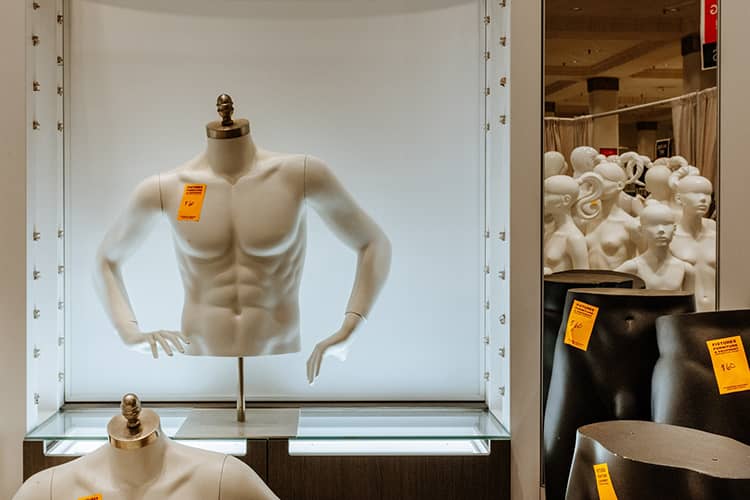
- Avoid armless mannequins because it will be tough to shape clothes with sleeves realistically.
- Get a mannequin that is standing straight. While in the usual brick-and-mortar stores mannequins look great in unique positions, in your online store, you don’t want any funny angles. Otherwise, your clothes may look weird once you remove the background in your pictures.
Prepare your clothes
This is a crucial step. Your clothing samples need to look their absolute best in a photoshoot. No matter how great you may be at Photoshop, it’s always a good idea to take care of wrinkles or stains before the shoot.
Thoroughly examine your clothing items. Iron or steam them if you see even the slightest creases. Remove dust. Fold your sleeves consistently. Your task is to prepare the garment so well that you’d need to use Photoshop only for the final touches, such as color or contrast correction.
Use enough light
Don’t let underexposed images ruin your sales.
Whether you are renting a professional studio or using an area at your home, the number one rule of product photography for an e-commerce store is to ensure bright lightning. You want to showcase your clothes’ colors and other details in the most accurate way possible!
If you don’t have the budget for buying or renting a lighting kit, use natural light.
A commonly recommended way is to organize your photoshoot near a large window. If the sunlight is too harsh, hang a sheer white sheet in front of the window – it will soften the light.
Don’t forget the details
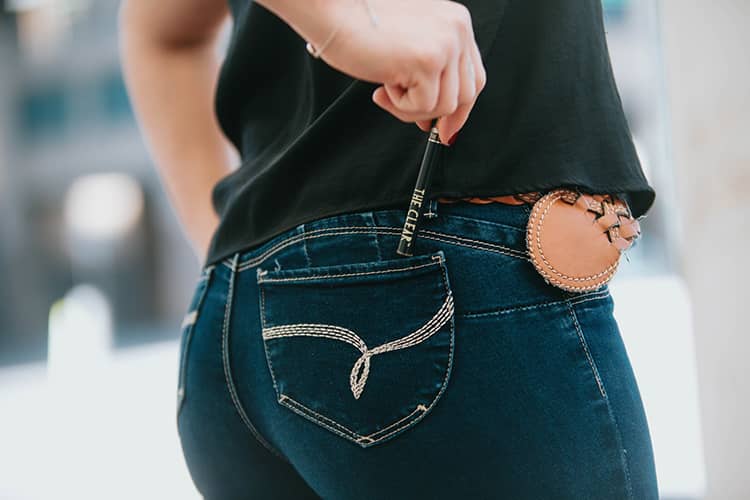
High-quality close-ups are always a good idea.
Since your customers can’t physically touch your clothes, you need to help them visualize as many details as possible. Your photos need to reveal the “feel” of the material, too. Show such things as whether an item has a zipper or buttons.
Plus, the more meticulous you are with your product representation, the less customer service questions you may get!
4. How to advertise clothes on social media

Fashion marketing wouldn’t be complete without social media. Just think of Instagram! Chances are your feed is mostly flooded by food photos and clothing ads from brands like Motel Rocks. And for a good reason.
You can use your online store’s social media accounts to connect with your audience and learn about their shopping preferences. Even more importantly, you can significantly boost your sales and get your clothing line known.
Below, we go over the main things you need to know to advertise clothes on social media.
✓ Allow shopping on social media
Selling clothes on social media gets so much easier when you turn your social media account into a shop! Integrate your store with social media channels like Instagram or Facebook and let your customers browse clickable catalogs of your latest collections.
See. Tap. Shop!
A. Instagram shopping
On Instagram, you can tag your products directly in photos, videos, and even stories! See how direct shopping looks on a feed post.

Once your potential customers tap on an item they like, they can see detailed descriptions with pricing and more images. They can also go straight to your website and complete the purchase instantly.
Another great feature is that people can bookmark their favorite products and buy them later. They can also send photos of your clothes in a direct message to their friends. This is really neat because sometimes all you need is a friend telling you that you need that dress in your life!
In-app checkout is coming soon
To make the shopping experience on Instagram even better, the app’s developers are now working on a native checkout feature. It’s currently in a closed beta version in the US only. They’re also testing more cool features, so stay tuned!

For now, work on your Instagram shopping. It’s something customers are getting used to as a norm rather than an extra feature. 130 million Instagram accounts tap on a shopping post to learn more about products every day! Be there for them, and you’ll see your conversions increase.
B. Facebook shopping
Just like Instagram shopping, Facebook shopping helps to make the online shopping experience seamless. It also lets you upload customizable collections and showcase your main products. Setting a Facebook shop takes just a few minutes, and it’s free!
You can either use your existing catalog or set up a new one that will work both on Facebook and Instagram.
You can add from 6 to 30 products to a collection and create cover images and collection names to best showcase your fashion brand. Plus, you can customize your shop with your brand colors and visuals.
✓ Use social proof
Would you go to a café that’s empty or the one that’s buzzing with happy people? Most likely you’ll choose the one with people – coffee must be great there, right? That’s social proof for you.
We’re likely to follow the actions of many because we think the interest of the masses signals the correct choice.
A. Encourage user-generated content
User-generated content or UGC can help you turn your customers into your brand ambassadors. You can get your clothing store in front of your target audience and gather authentic content.
For example, Omoda, a fashion brand from the Netherlands, encourages its customers to upload photos with their products using a branded hashtag. Omoda gets social proof, and their customers enjoy attention once they’re featured on the brand’s Instagram page or website.

You can do the same thing! If you want to, you can get more creative with your hashtag and turn it into a unique call-to-action.
How to get UGC content?
Provide incentives! If you have a bit of a following, exposure is already a solid reason for your customers to upload photos with your products. If your brand is still new, you can encourage UGC by creating a contest or giveaway.
UGC should be in your content marketing plans if you want to build brand loyalty.
Pros of advertising a clothing brand with UGC:
- You get authentic content. The best mannequin for selling clothes online is your happy customer!
- Your customers can be a part of your brand story.
- In turn, you can build an emotional connection with them.
B. Ask for testimonials
Reviews matter! It’s probably the most direct form of social proof. Ask your customers to write you a testimonial whenever you get a chance.
For example, you can send automated emails to your clients once they get the clothes they bought from you. You can encourage them to write a review by just asking politely, or you can offer a small discount on their next purchase.
PRO TIP: Use social proof on your Facebook ads to promote the reliability of your fashion brand.
✓ Influencer marketing is still a thing
Wondering how to market a new clothing brand when you don’t have loyal customers yet?
Influencer marketing can save the day. However, our honest advice would be to go for multiple micro-influencers instead of hiring one big influencer.
A micro-influencer is someone who has between 10,000 to 100,000 followers.
Micro-influencers tend to focus on a specific niche, so you can be sure you’ll reach your target audience. Plus, the followers of micro-influencers are also more engaged.
Here’s an example.
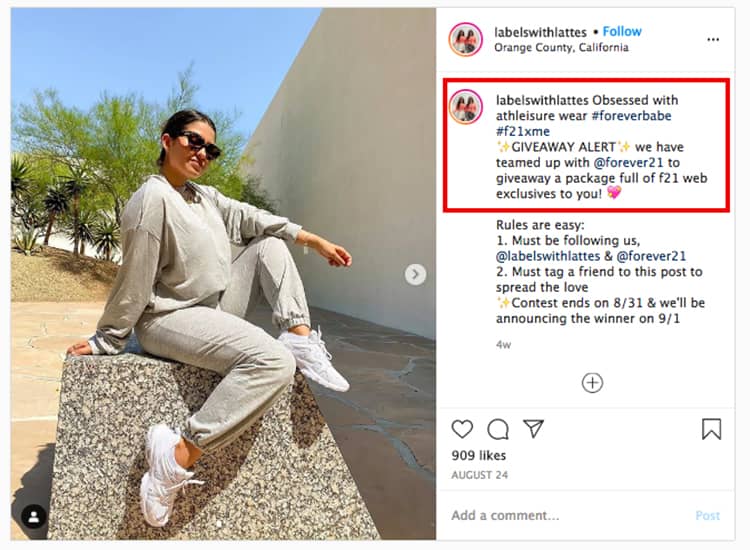
Some of the micro-influencers may even be willing to promote your brand if you send them a free item from your online store.
✓ Run a contest or giveaway
If you’re starting to dropship clothes and have no clue how to do clothing marketing, running a contest or giveaway is always a great idea. It’s a pretty easy way to attract attention. All you need to do is to find an angle for your contest.
For example, you can promote your new products or celebrate a holiday. And it doesn’t need to be a major one like Christmas – you can find plenty of relevant social media holidays to celebrate, such as #NationalHatDay.
Contests and giveaways are a great way to get initial followers.
Sure, they may not be your most quality followers since they’re there to win something. Still, 500 new followers are better than 0 followers. They will act as social proof and will encourage your target market to follow you on social media.
✓ Best hashtags to sell clothes on Instagram
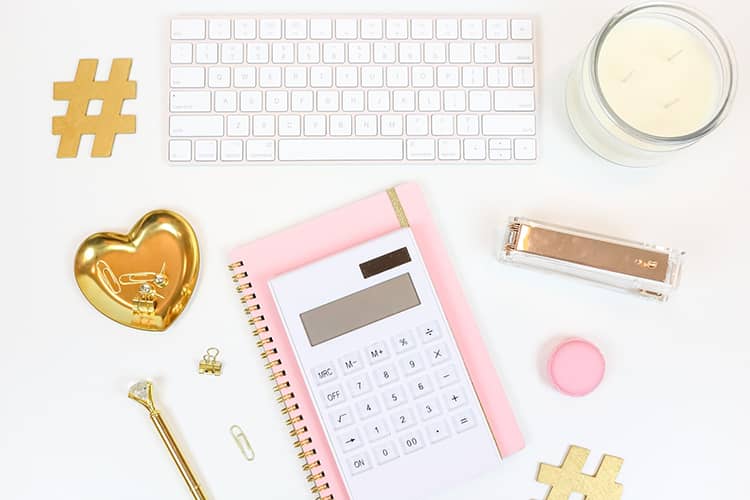
Here’s a special section for Instagram hashtags because they’re the main driver behind organic growth on this social media channel.
Instagram allows for 30 hashtags per post. Our recommended formula would be to use the sets of five hashtags. Here are the possible categories per each set:
- Fashion hashtags (#womensfashion)
- Clothing specific hashtags (#leatherjeans)
- Season hashtags (#winterskirt)
Our advice is to use 5 hashtags with a big volume and 5 hashtags with a small volume per category. This way, you can increase your chances of getting on the Instagram Explore page.
The truth is, there’s no such thing as an ultimate set of hashtags you can copy-paste each time for different posts and get great results every time. You need to find the right hashtags to sell clothes on Instagram for different products yourself.
Work on your Instagram hashtag strategy.
Pick a day to do hashtag research. Start by listing categories of clothing items you sell (skirts, dresses, coats, etc.). Then, go to your Instagram, tap on the search bar, then on tags, and start searching for hashtags.
As you’ll start entering your first keyword, for example, #skirts, you’ll instantly see multiple related hashtags. Go through the list and write down the ones that are relevant to you. Group them by volume. Repeat the same thing with other topics.
Once you’re done, you’ll have a comprehensive list of hashtags that you can conveniently use each time you need to create a post.
However, if you don’t have the time for any of that, remember, you can always simply run Instagram ads. You can get in front of shoppers in a few minutes if you’re using ad automation.
5. Affiliate marketing for clothing can scale your store!

Need more marketing ideas for your online clothing store? We’ve got you covered. Ever heard of affiliate marketing? It’s one of the best ways for a clothing brand to attract new customers, especially if you don’t have enough time to create blog content on your website.
Affiliate marketing is promoting someone else’s products on your website. So, if you have a fashion brand you want to advertise, you need to create an affiliate program and find relevant promoters (affiliates) in your niche.
As a merchant, you get targeted traffic with a high conversion rate, and the affiliate receives a commission from each sale you make. It’s a win-win partnership.
The great thing is that you can work with multiple affiliates at once! Just make sure you give them unique links, so you know where the sales come from.
How to start selling clothes with affiliate partners
Below, we listed the main ways you can find fashion lovers who could be interested in working with you.
- Outreach Bloggers. Google your main keywords. Let’s say you’re selling raincoats for women. See what kind of content comes up for “best raincoats for women.” Look for blog posts in the first few search results pages, see if you can find bloggers in the fashion industry who write about similar brands. Once you make a list of bloggers you would like to work with, pitch your affiliate program to them. Send them your raincoats for free, introduce them to the terms, and ask them to publish reviews about your items. Most importantly, try to build a long-term relationship. Repeat the same process with YouTube vloggers.
- Search for influencers. Influencers fit in well with an affiliate marketing strategy. They boast large followings, and it’s easy for them to direct their followers to your store. Like we explained before, look for micro-influencers – you’ll get better results. Just make sure they have 10,000 followers so they could include a swipe-up link to your site.
- Run ads. Create a landing page for your affiliate program and advertise it with Google Ads. People will find you themselves.
- Affiliate networks. Join affiliate networks and list the products you want to advertise. Make your offer attractive for your potential affiliate partners. It’s also a good idea to include material that would help to promote your clothing items. Think main value propositions listed in bullet points, banners, etc.
6. Don’t forget email marketing

No, email marketing is not dead! On the contrary, 73% of millennials say email is their preferred means of business communication. If you’re taking your content marketing seriously, email should be in your strategy.
What kind of emails should you be sending?
Welcome emails
It’s your chance to make a good first impression. Remember, someone willingly gave you the permission to spam them once in a while – make it count. Especially, having in mind that the average open-rate for welcome emails is 50%!
What should you include in your welcome email?
It’s a good idea to thank your subscribers and introduce them to your brand in a sentence or two. Also, set expectations for the future. How often will you be emailing your subscribers?
Most importantly, deliver what you promised for the subscription. For e-commerce brands, it’s often a discount or free delivery.
Content emails
Don’t start hard-selling right away, as many fashion brands do with their email marketing. Be more clever. Use content marketing to provide useful information about the latest trends in the fashion world and incorporate your clothing line. Have an interesting blog post? Link to it!
It’s also a good idea to get a little more personal and talk about your brand story. People like buying from people more than from a faceless company!
Promotional emails
Use email marketing to promote your special offers. If possible, send personalized recommendations based on past purchase behavior in your store. 73% of consumers prefer to shop at online retailers who personalize their shopping experience.
Adding promotional QR Codes to the email provides an interactive element for your target audience. With the Beaconstac’s QR Code generator, you can quickly generate QR Codes that are safe and customizable.
7. Work on your website

Finally, make sure your website shines. After all, why bother with all these marketing strategies for your clothing brand if the actual store disappoints your audience? Fashion industry is tough. You need to be serious with your digital marketing if you want to succeed.
Polish your product pages
Think about these questions when evaluating your product pages:
- Is it easy to navigate my product pages?
- Is the information in my product pages easy to find and the copy is clear?
- Are my call-to-action buttons visible and clear?
- Would I buy from myself?
- Do the photos on my website look professional?
Ensure responsive web-design
Responsive web design enables your Shopify clothing store to fit into the screens of different devices. It also adapts to orientation and ensures your store looks great and is easy to navigate both on big and small screens.

The best clothing Facebook ads to get you inspired
With so many brands out there, you need to run effective advertising campaigns to stand out in your market. Below, we’ve gathered a few great examples of how you can use Facebook clothing ads and drive sales. Take a look!
1. MeUndies - an underwear brand

Fashion brands can be funny! Plus, it’s a creative way to use Facebook carousel ads.
2. Dress Lily - a dropshipping store
This brand has found a great way to illustrate many options of their mermaid blanket available. Plus, they give the price range and a 50% discount offer. Marketing strategy done right!
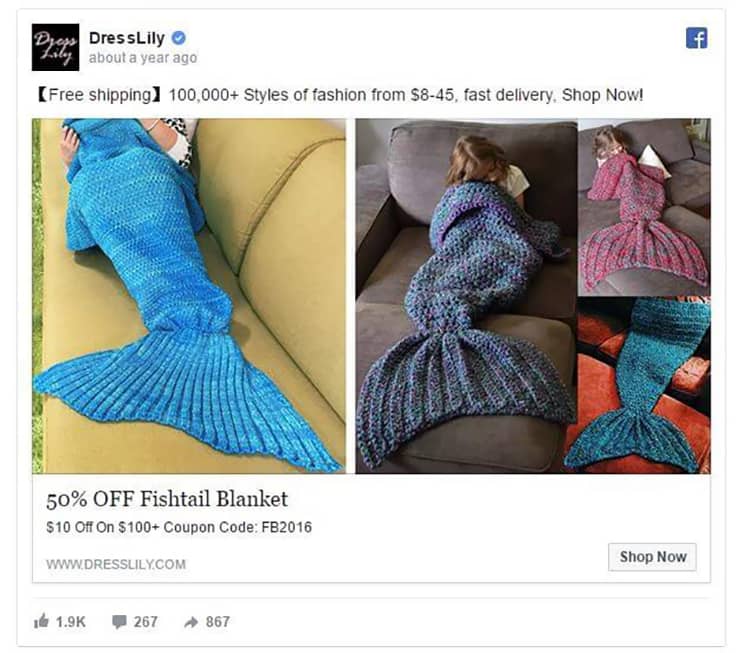
3. Under Armour - sports apparel

It’s always a great idea to appeal to aspirations. Under Armour does exactly that by showing what their customers can achieve with their clothing. The inspiring image is also complemented with the ad copy that gives more details about the fabric. There’s free shipping, too!
Key Takeaways
Here are the main things on how to promote your clothing brand:
- Narrow down your target audience and plan personalized marketing campaigns.
- Run automated targeted clothing advertisements to save time and increase sales.
- Photography is key in fashion marketing. Learn how to take quality photos of your products or hire a professional photographer.
- To stand out from other clothing brands, take your social media seriously. Enable shopping features, use social proof, foster connections with micro-influencers, run contests, and work on your hashtag strategy.
- Use affiliate marketing to drive shoppers to your website.
- Include email marketing in your marketing campaigns. Consumers like getting relevant emails that help them with their purchase decisions.
- No matter how great your fashion marketing is, if your website is difficult to navigate, you’ll lose many potential sales. Polish your product pages and ensure your online store looks great on all devices.
Made it till the end? You’re ready to take your side hustle into a full-time business! Here’s a bonus source for you: Learn how to spy on your competitor’s Facebook & Instagram ads and be on top of the game!



